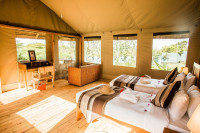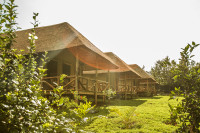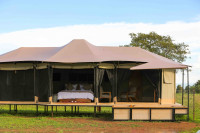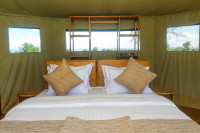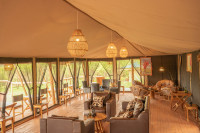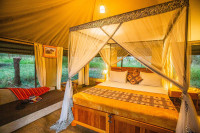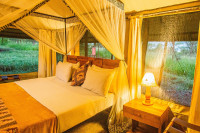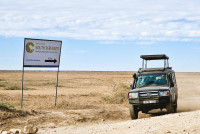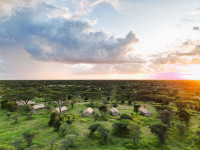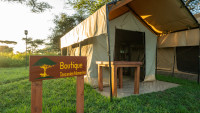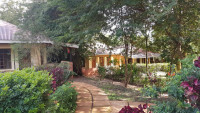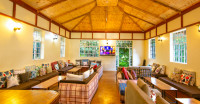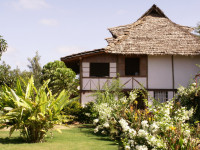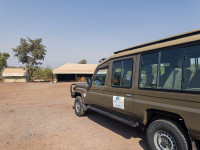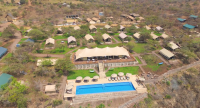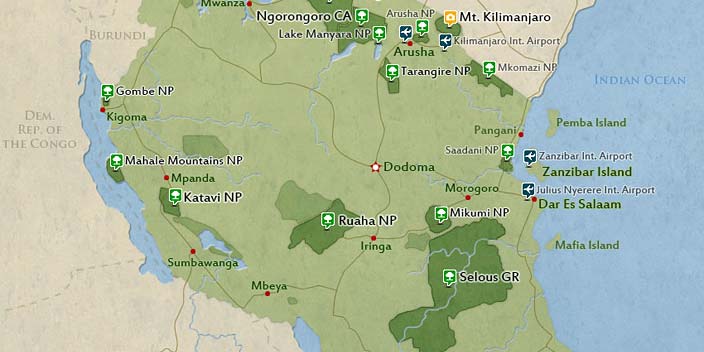
$2,100 pp (USD)
2 travelers on Start dateArrival
Arrival

Day 1
Tarangire National Park
Tarangire National Park
After a safari briefing in the morning and an approximate 2-hour drive, you will arrive at the Tarangire National Park. Giant baobab trees, bush savannah and seasonal marshes add to the wonder of this nature reserve. The Tarangire National Park is considered one of the best places to view elephants up close. The park is also home to buffaloes, zebras and wildebeests which are always closely followed by a range of predators such as lions. Leopards are seen now and then but cheetahs are rarely spotted. From the open roof of the safari vehicle, you will be able to absorb the landscape and watch the animals. Late in the afternoon, you will leave the park and drive to the lodge, where you will spend the night.
- Main Destination:
- Tarangire National Park
- Accommodation:
- Kankari Lodge
- Meals & Drinks:

Day 2
Central Serengeti National Park
Central Serengeti National Park
You’ll never forget the time you spend in the Serengeti. Perhaps it will be the sightings of leopard and cheetah as they show their skills as feared hunters of the plains and valleys. Or that unforgettable moment when an elephant family feeds alongside your vehicle, so close you could almost reach out and touch them. Or the first time you hear a lion roar. Then there are the herds of buffalo, zebra or wildebeest so large that they move as one across your horizon, like a river. All of these experiences are possible in the Serengeti, one of the most beautiful parks in Africa.
- Main Destination:
- Central Serengeti National Park
- Accommodation:
- Sidai Serengeti Camp
- Meals & Drinks:

Day 3
Northern Serengeti National Park
Northern Serengeti National Park
The entire day is dedicated to game viewing in the Serengeti. The areas that you visit will depend upon where the migrating herds are. Predators usually follow closely behind the trekking animals and include lions, leopards (in the acacia trees) and cheetahs. During the short rainy season in November and December the herds move from the hills in the north to the plains in the south. During the longer rainy season from April to June they return up north. As the migration is completely dependent on the yearly rainfalls, the location of the herds may vary from year to year but your guide will know where to locate the animals and where to see them best.
- Main Destination:
- Northern Serengeti National Park
- Accommodation:
- Tukaone Hembe Camp
- Meals & Drinks:

Day 4
Serengeti Plains – Ndutu Area
Serengeti Plains – Ndutu Area
On your outward journey to the park gate, you will enjoy some more game viewing before you leave the Serengeti National Park in at around noon to continue your journey to the Ndutu Area. There's so much to look forward to when you visit the Ndutu Area. Area. It's a world of cool-climate forests and views of craters and cliffs that come into focus through the trees. Watch also for the wildlife that lives in the forest, such as elephants and buffaloes, and leopards if you're very lucky.
- Main Destination:
- Ndutu (Southern Serengeti NP)
- Accommodation:
- Africa Safari South Serengeti Camp
- Meals & Drinks:

Day 5
Ngorongoro Crater
Ngorongoro Crater
On this day you will descend over 600 meters into the crater to view wildlife. Supported by a year round water supply and fodder, the Ngorongoro conservation Area supports avast variety of animals, which include herds of wildebeest, zebra, buffalo, eland, warthog, hippo, and giant African elephants. Another big draw card to this picturesque national park is its dense population of predators, which include lions, hyenas, jackals, cheetahs and the ever-elusive leopard, which sometimes requires a trained eye to spot. We will visit Lake Magadi, a large but shallow alkaline lake in the southwestern corner, which is one of the main features of the crater. A large number of flamingos, hippos and other water birds can usually be seen here. After an extensive game drive and a picnic lunch, you will leave the caldera in the afternoon and head to the lodge for dinner & overnight.
- Main Destination:
- Ngorongoro Crater
- Accommodation:
- Eileen's Trees Inn
- Meals & Drinks:

Day 6
Lake Manyara National Park
Lake Manyara National Park
The park is dominated by the lake of the same name, which attracts large colonies of water birds. Particularly impressive are the pink-colored flamingos, but also many other bird species such as cormorants, pelicans or storks can be observed here. A total of about 400 different bird species live in the park. The park is also famous for its tree climbing lions, which are usually found in the central and open part of the park. During the safari you will also see elephants, zebras, giraffes, buffaloes, hippos and many other animal species. In the afternoon you leave the national park and you will head to the lodge for overnight.
- Main Destination:
- Lake Manyara National Park
- Accommodation:
- Africa Safari Manyara Escarpment Camp
- Meals & Drinks:

Day 7
Traditional Village Maasai Experience - Arusha/JRO
Traditional Village Maasai Experience - Arusha/JRO
You will be able to discover the traditional life of the Maasais, their culture, their traditions and visit their bomas (grouping of huts of an extended family). On arrival at the village, expect to be greeted in the traditional manner: plenty of singing and dancing, with participation very much encouraged! There is then the opportunity to learn about some of the customary practices such as fire-making and beadwork. You may also get the chance to meet and speak to villagers in their homes - questions are very welcome and your guide will happily interpret if needed. During your visit, there is also the opportunity to purchase handmade leather and beadwork from the villagers. Once your time in the village has come to an end, you will head to Arusha/JRO.
- Main Destination:
- Mto Wa Mbu (Town)
- Accommodation:
- No accommodation (End of tour)
- Meals & Drinks:
















